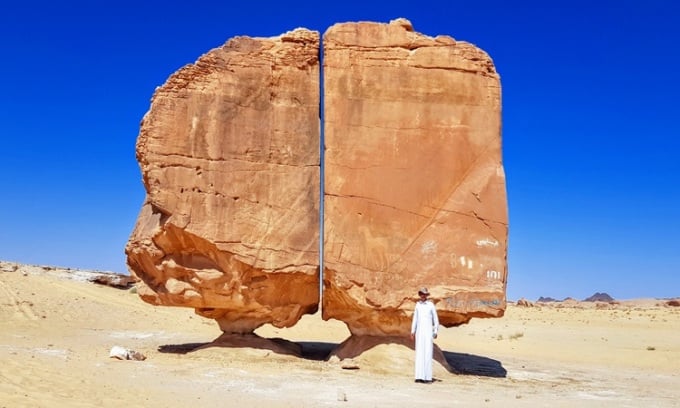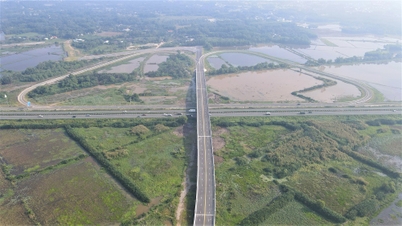Saudi Arabia Al Naslaa is a massive rock formation that looks as if it was cut in half down the middle by a laser. It is a stunning example of the forces of nature at work.

Al Naslaa Rock in 2021. Photo: Wikimedia
In fact, researchers believe that the Al Naslaa rock is entirely natural, according to IFL Science . The 6-meter-high rock sits on two natural supports, making it appear as if they are suspended in perfect balance with each other. It is difficult to imagine the Al Naslaa rock being created by chance, but most scientific theories about its existence focus on weathering.
Located in the Tayma Peninsula, Saudi Arabia, the Al Naslaa Stone is one of the finest examples of rock carving in the world . Representations of Arabian horses, ibex, and humans appear all over the surface of the megalith. Researchers are still unsure exactly when the carvings were made, but Al Naslaa is believed to be more than 4,000 years old.
There are several theories surrounding the gash that runs through the center of Al Naslaa. One theory is that the rock sits on a fault line and that the gash was originally created by the ground beneath the rock shifting, splitting it at its weakest point. The resulting crack then became a kind of “tunnel” for the desert sand winds to sweep across the surface. As sand particles flew through the gap over thousands of years, they could have worn the uneven crack down, resulting in a perfectly smooth surface.
Researchers have not ruled out the possibility that the crack is a fissure, meaning a break that naturally forms in the rock rather than being caused by movement. This type of fracture separates rocks and can be unusually straight, as in the case of Al Naslaa.
Another theory is that freeze-thaw weathering created the fissures when ancient water seeped into small cracks in the sandstone that were then joined together. This water could then freeze, causing the fissures to worsen. After the cold period ended, the ice in the cracks thawed and melted, leaving a perfectly straight gap that bisects the rock.
As for the pedestal the rock sits on, these are quite common in desert areas, sometimes called mushroom rocks because of their shape. They are often the result of weathering, where the wind blows faster near the ground, eroding the rock more there, or glacial activity, where the rock shifts to rest on top of another rock.
Due to the nature of sandstone, the Al Naslaa rock is not very solid, and is therefore susceptible to weathering and human impact. It is possible that an ancient civilization created the strange rock sculpture as a geographical landmark, an area of religious significance, or an example of primitive art.
An Khang (According to IFL Science )
Source link








































































































Comment (0)